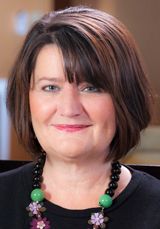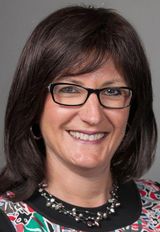Patient Centric MS Trial Results
Applied Clinical Trials
A patient-centric approach to a Phase IV trial for an MS treatment resulted in lessons that can be applied to future therapeutic studies for this and other rare diseases.
The concept of patient-centricity in clinical trials is not new, and it is gaining traction among sponsors and investigators. However, this term has taken on a broad, often vague, meaning. Implementation of patient-centric strategies can be complicated and often lacking in measured results. The concept brings up a wide range of questions: what patient-centric strategies are the most effective? When and how should patients be engaged? How does a study sponsor gain consensus on new approaches for study design and patient recruitment? What is the impact of a patient-centric approach on study milestones and outcome?
Lesley Schofield, Head, Medical Affairs Clinical Operations, Medical
Affairs & Registry Trials, Novartis, and Nancy Mulligan, Senior Operations
Nancy Mulligan

Lesley Schofield

Director, Patient & Physician Services, United BioSource Corporation (UBC), implemented patient-centric strategies while partnering on Novartis’s PREFERMS study. The study looked at patient retention of the study drug vs. currently approved disease-modifying therapy in patients with relapsing-remitting multiple sclerosis (MS).
In the following Q&A, Schofield and Mulligan share their patient-centric approach, which included ensuring the PREFERMS study engaged MS patients in key study design decisions, achieving recruitment goals by recognizing patients’ strong involvement in the MS community, and customizing site services to best support investigators and their healthcare teams.
Q: This study exceeded enrollment projections, correct? What strategies were most impactful to achieving that?
SCHOFIELD: We enrolled 881 patients across 130 study sites in the U.S. There were a number of challenges to reaching this milestone-competing studies, fatigue among study sites and the protocol’s data collection schedule, to name a few. From the start, we worked closely with sites. We listened to their feedback on the challenges to protocol implementation, and ultimately there was an amendment based on their feedback that helped boost enrollment. We knew that to succeed, we had to minimize the burden on the site, and on the patient.
MULLIGAN: Our UBC team had a staff person working individually with each study site. The recruitment specialist talked to study coordinators on a weekly basis, to evaluate tactics that were in place and provide insights on anything else that could be done to reach patients. We implemented a mix of tactics that would be most effective for each site. Recruitment tactics included mailings, advertising, online presence and participation in community events. We launched a grassroots strategy to reach patients in their own backyard. We found that participating in MS walks and runs was critical. Site personnel would host a table or booth with study information or participate in the walk/run as a team. These events not only raised awareness and credibility in the community, they also helped to keep the study teams motivated and engaged.
Q: The MS community is known to be highly motivated and highly involved. Patients have formed strong support networks, rely heavily on the Internet for research, use social media and participate in online communities. How did you tap into this community for the PREFERMS study?
SCHOFIELD: This study initiated in 2012, and we knew that it was crucial to reach people with MS online. One approach we took was PatientsLikeMe, an online community of people with different health conditions.
Through PatientsLikeMe, we were able to inform people about the study, reaching members who expressed interest in MS research. To extend our online presence, we created a Facebook page for the study and posted IRB-approved content and advertising on Facebook. It was exciting to see the several thousand “likes” that accrued over the course of the study. We also used online advertising to drive traffic to the study website, which featured an online screener, making it easy for visitors to see whether or not they may qualify for the study.
Q: Study sponsors are increasingly looking to collaborate with patient advocates. How did this occur on the PREFERMS study?
MULLIGAN: Patient advocates can bring a lot to a study, but it’s important to remember that your study is not their number one priority. Their priority is to get the best possible healthcare and services for the members they support. If your study can fit those objectives, then you will get access to incredible information that will make your study more relevant and successful.
As Lesley pointed out, PatientsLikeMe was critical to our ability to reach MS patients. Thanks to that organization, we had access to 33,000 patients we could reach out to for feedback on language and messaging, as well as potential participants.
We also observed and participated in online conversations, including patient blog sites and community groups. This enabled us to get an insider’s view of what patients are experiencing, what information they’re looking for, and what they need to live with their disease, because this truly is a disease patients live with for many, many years.
Q:The PREFERMS study was among the first of Novartis’s studies to utilize a Facebook page. Were there internal roadblocks to that launch? How did you overcome them?
SCHOFIELD: Whenever you aim to try something new or establish a new paradigm, there are pain points. To gain internal consensus for new recruitment methods, we had to be thorough in our recommendation-explain what we wanted to do, how it would work, and the messages that would be communicated. As with any communication, it was important to listen. To address and alleviate concerns. In this case, for example, we provided detailed information about how the Facebook page would work, and talked through the nature of the online posts, and how that would be managed. The internal review for the study Facebook page took several months and several modifications and repeated attempts before it was approved.
Q:Technology and social media enable sponsors to better engage patients in studies. How was this part of the recruitment strategy for PREFERMS?
MULLIGAN: We know that most MS patients first begin to have symptoms between the ages of 20 and 50, so it’s a young, tech-savvy patient population. As I mentioned, we launched an online screener on the study website so patients could easily learn more about the inclusion/exclusion process. We leveraged the Facebook page that Novartis set up and were able to reach patients through that channel. We utilized geo-targeted ads to reach patients living near specific study sites, and since we know that MS affects significantly more women than men, we tailored our online advertising to that segment of the population. We also advertised the study on Craigslist, a free listing that generated referrals.
Q:With the increased focus on patient-centric tactics, why was it especially important to take a patient-centric approach with this study population?
MULLIGAN: MS patients have formed a strong community, and they’re willing to share a lot of information about their disease, treatment successes, and challenges. MS patients are incredibly educated about the disease, and they’re really leading the way in how future studies should be conducted. They’re directing the show in a positive way. They do a ton of research and learn from one another.
Patients want to learn everything they can so they know what they’ll have to live with-what they may be up against. MS patients often know about studies and treatments in development before their healthcare professionals. They know about drug availability and what side effects other patients may be experiencing.
As recruitment specialists, we really have to do our homework and become experts in every therapeutic area that we work in; for MS it’s almost like teaching a computer class to a group of information technology experts. It makes recruitment easier in the sense that patients already understand a lot about the study process, but harder in the sense that they may only be interested in very specific treatment options.
Q:In addition to the PREFERMS study, how are you working with sponsors to gain patient insight on study design and enrollment?
MULLIGAN: I always advise sponsors that collaboration early in the study process is essential. I can’t emphasize enough the value of gathering insights from a variety of stakeholders-whether that’s the patient community, prescribers, KOLs-and making study design decisions based on their feedback.
My team conducts in-depth interviews and focus groups to gather patient input. We’re able to learn about potential challenges to study participation. Qualitative research can help a sponsor understand which study requirements may be too burdensome on a patient. Is the visit schedule taxing? Are the patient reported outcomes tools suitable to the patient population?
Early patient involvement, whether through surveys, focus groups or advisory boards, is the best way to get good information that will set you up for success.
Q:Gaining consensus for new, patient-directed strategies often requires significant time and effort. You paved the way with this study. Do you see a shift in the practice of being patient-centric with research?
SCHOFIELD: We’re making a significant push to ensure we’re putting patients first. To really be patient-centric, we need to move beyond the buzzword. To take steps to try to understand the patient experience, whether in a clinical study or in day-to-day living with a condition.
In the PREFERMS study, we successfully implemented a combination of patient-centric approaches. We involved the patient early and often in the process, not just in the beginning when we developed the protocol. As we reached out to various channels and expanded our recruitment strategies, input from patients helped us find the right participants. The PREFERMS study completed enrollment two weeks ahead of schedule. The study has concluded and results are being analyzed. Through the drug discovery process we seek to innovate. That refers to the science, yes, but can’t we also seek to improve the patient experience in that process?

Improving Relationships and Diversifying the Site Selection Process
April 17th 2025In this episode of the Applied Clinical Trials Podcast, Liz Beatty, co-founder and chief strategy officer, Inato, discusses a number of topics around site engagement including community-based sites, the role of technology in improving site/sponsor relationships, how increased operational costs are impacting the industry, and more.
SCOPE Summit 2025: Enhancing the Patient Experience Through Site Centricity
February 12th 2025In an interview with ACT senior editor Andy Studna at SCOPE Summit, Ashley Davidson, vice president, product lead - sponsor tech strategy, Advarra, highlights the need for more site-centric approaches in study startup.